https://www.ancienthistorylists.com/egypt-history/top-10-iconic-art-ancient-egypt/
Top 10 Most Iconic Pieces of Art in Ancient Egypt
The job of the craftsman is to catch a fleeting moment in time and preserve it in history, and while a piece of art is undoubtedly of its time, it should also transcend it and be able to speak to us across the generations. One of the greatest examples of this is the craftsmanship and art of ancient Egypt.
Egypt is acknowledged as having one of the most well-established and prosperous civilizations on earth, and its artifacts have stood the test of time. From the sky-scraping pyramids to the fantastic sphinx that sits as a gatekeeper to the tombs of the pharaohs, ancient Egyptian architecture and sculpture is iconic. However, there is much more to this art than these awe-inspiring monuments.
The ancient Egyptians regarded their art not only on an earthly level but also as a reflection of the spiritual world. Their craftsmanship mirrored their reverence for the gods and the afterlife, and these ancient pieces of art clearly speak of a rich Egyptian history and culture. This unique creative style remained practically unaltered for more than 3,000 years and can be seen in the artifacts which remain today.
Here are 10 amazing examples of ancient Egyptian craftsmanship:
1. King Tutankhamun's Tomb
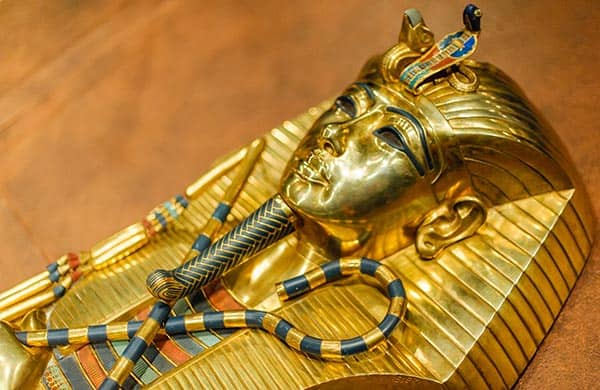
The glorious tomb of King Tutankhamun is a lot smaller than many of the other pharaohs' tombs, yet no less splendid. The artifacts found inside the tomb have been of great significance in learning about this ancient era. One of the most precious things discovered were the king's throne and his golden mask. Excavating the tomb was a long and painstaking process, and around 3,500 individual artifacts were uncovered. Tutankhamen's tomb was unusual in that it was discovered with his mummy intact in the burial chamber.
2. Throne of Tutankhamun (14th century BC)
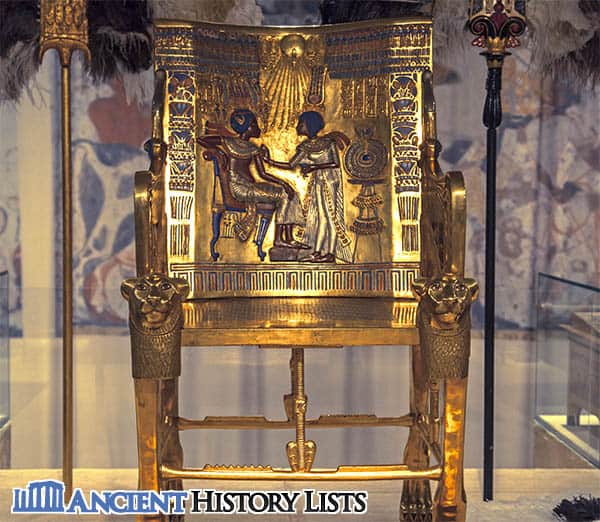
The Golden Throne was found in 1922 by the British archeologist Howard Carter during the excavation of Tutankhamun's tomb, one of the few in the Valley of the Kings not to have been looted. The magnificent throne shows the reverence the people had for their pharaohs and its splendor and fine craftsmanship makes it a rare and precious find. Its colors have not faded in more than 3,000 years, which shows the skill and expertise of the ancient Egyptian craftsmen.
Colored glass and precious stones sparkle against the background of gold, and its seat is adorned with vivid pieces of quartz, reminiscent of a Byzantine mosaic. A scene from the everyday life of the pharaoh is engraved on the surface of the throne: the youthful Tutankhamun sits in a casual posture, while his wife Ankhesenamun massages scented oils into his shoulders. If you look carefully, you can detect a gold band around Tutankhamun's left foot, and his wife has a similar adornment on her leg. In ancient Egypt, these bracelets were viewed as a symbol of marriage.
3. The Egyptian Book of the Dead (16th century BC)
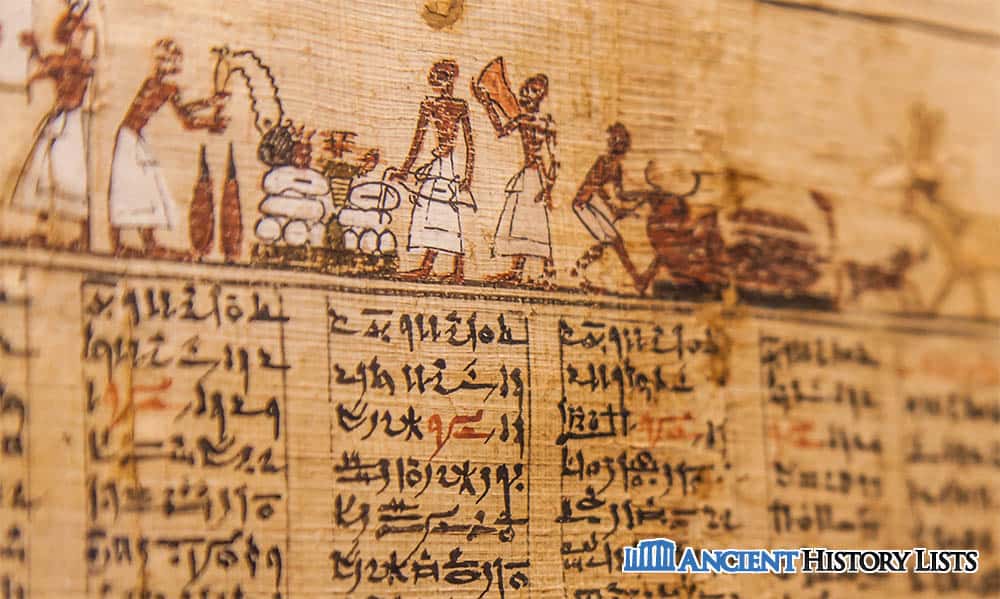
The Egyptian Book of the Dead is an ancient Egyptian funerary text, and was used from the beginning of the New Kingdom (around 1550 BC) to around 50 BC. The original Egyptian name directly translates as the "book of coming forth by day" or the "book of emerging forth into the light." It contains spells to help a dead person travel through the "duat" or realm of the dead, into the afterlife. The Book of the Dead includes pyramid and coffin texts which were originally painted onto objects, not papyrus.
4. The Golden Tree of Life
The ancient Egyptians had a strong belief in symbolism as can be seen in the papyrus painting, the Golden Tree of Life. East was considered to be the direction of life as the sun rises in the east. West was viewed as the direction of death as that is where the sun sets. The Egyptians believed that during the night, the sun passed through the realm of the dead before it rose again in the east the following day. In the painting, the birds in the tree represent the stages of life and they all face toward the east apart from one bird which stands for old age and faces west, symbolizing imminent death. The beautiful painting is full of color and conveys a deep spiritual message.
5. The bust of Nefertiti (14th century BC)
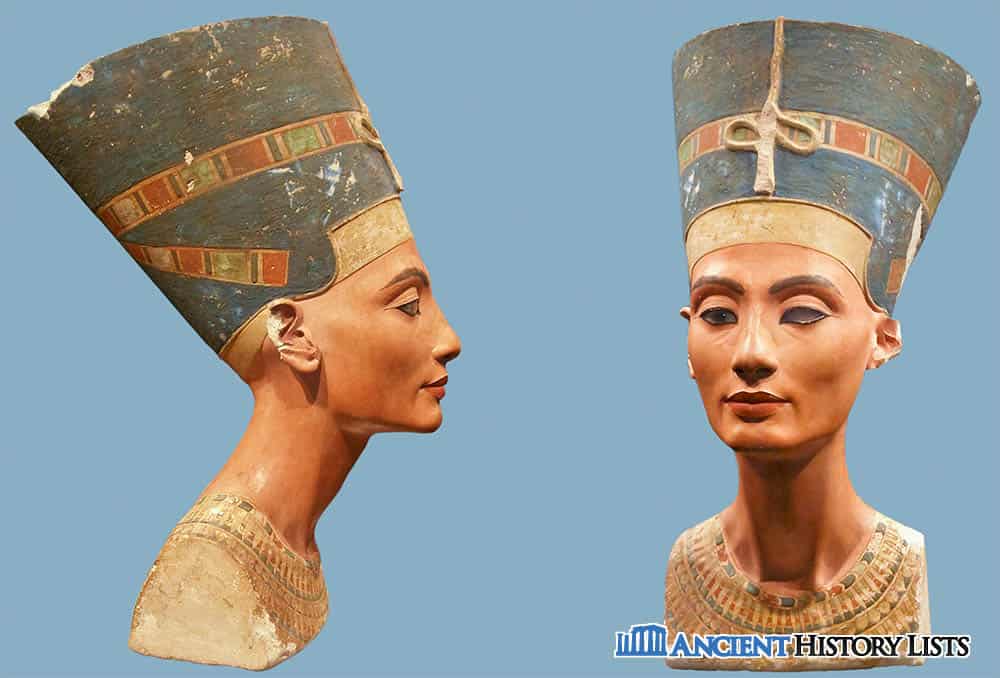
Nefertiti's bust was most likely made around 1340 BC, at the same time as the great statue of Akhenaten. It weighs 20 kilograms and is life-sized, cut from a single square of limestone. The idea of a royal likeness was not uncommon in ancient Egyptian culture; Egypt's temples and palaces are brimming with them. What makes this representation exceptional is its accurate depiction of the queen. Nefertiti's bust is remarkably well preserved. The face has been carved to show her delicately sloping cheekbones, solid jawline, and sharp nose, and the limestone center was coated in gypsum stucco which was then painted. The outcome is a staggeringly accurate likeness. The bust shows her dark colored skin, red lips, jewelry, and crown. The eyes are set with gemstones and fixed with beeswax.
6. Canopic jars
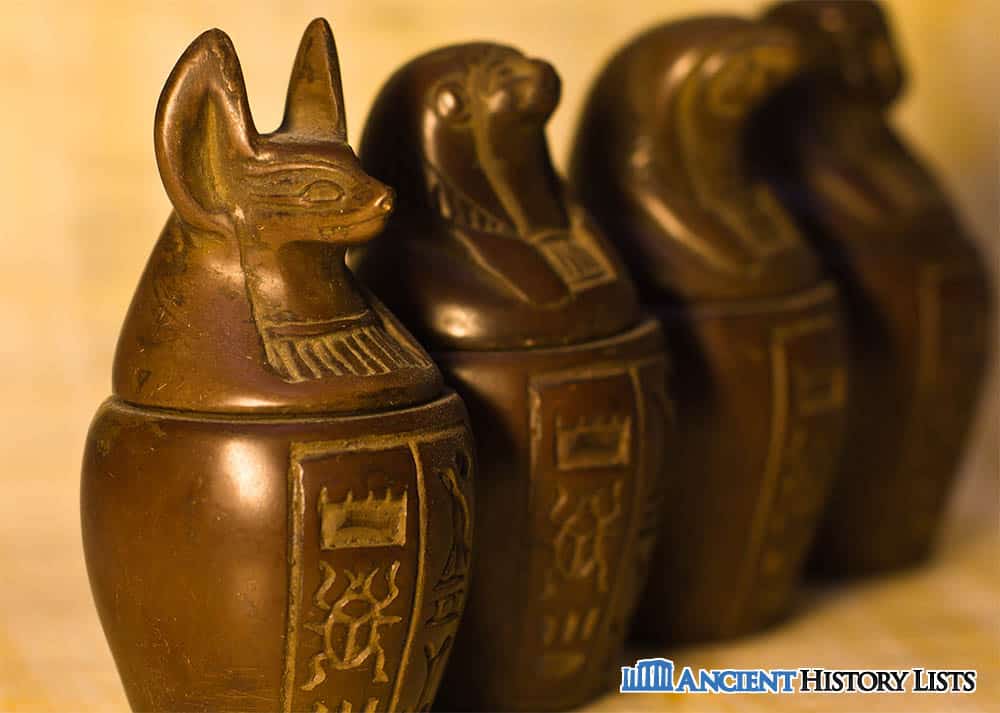
Canopic jars were used by the ancient Egyptians during the embalming process to store and protect the deceased's organs. Each organ has its own container. The jars were made of stoneware or carved from limestone. These containers were used from the time of the Old Kingdom up until the Late Period or the Ptolemaic Period, after which the organs were wrapped and put in with the body. The term "canopic" was mistakenly believed to be associated with the Greek legend of Canopus by early Egyptologists. Canopic containers of the Old Kingdom were only occasionally engraved and had a plain lid. In the Middle Kingdom, engravings became more common and the lids were often shaped as human heads. By the 19th dynasty, the lids had come to represent the four children of Horus as gatekeepers of the organs.
7. Papyri
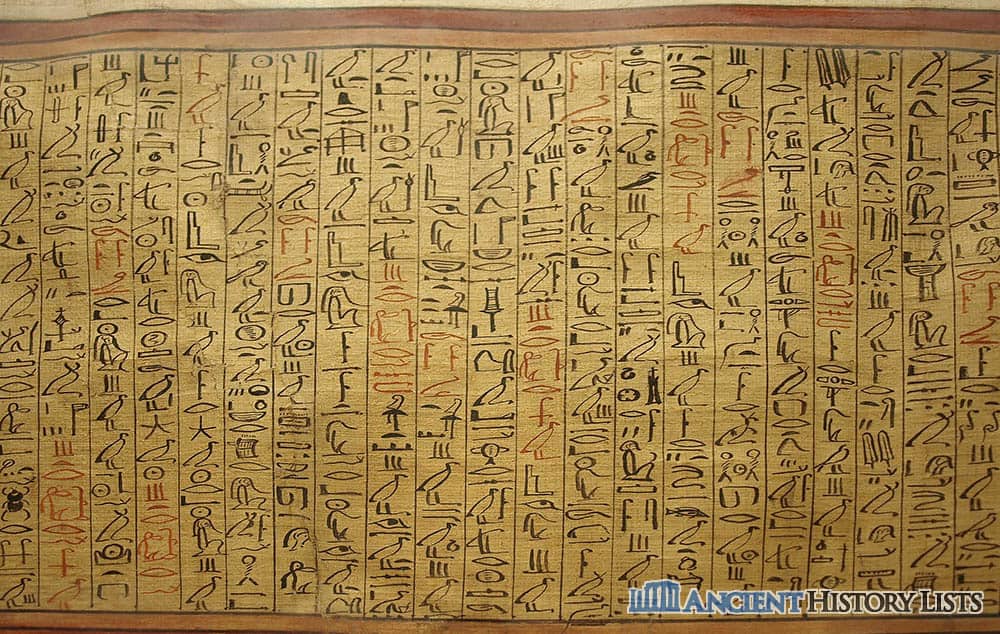
The word "paper" comes from "papyrus," a plant which was grown in the Nile delta, and papyrus paper was made from its pith. Long rolls of papyrus have been found, some up to 10 meters in length. The method for creating papyrus was lost for a while, but was rediscovered by an Egyptologist during the 1940s. Papyrus writings show many elements of ancient Egyptian life and incorporate scholarly, religious, and administrative records. The pictorial lettering used in these writings eventually led to the two most basic lettering systems used today: Roman and Arabic.
8. Khufu's statue (26th century BC)
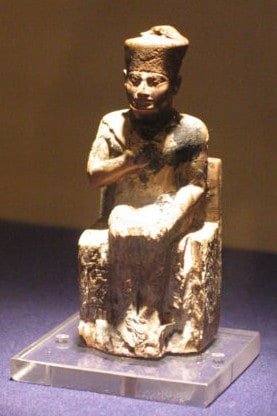
Khufu's statue was found in 1903 by W.F. Petrie in Abydos. It is 7.5 centimeters high and the beautiful carving of the king's face can still be clearly seen. The cartouche on the left-hand side of the throne, beside the ruler's leg, is no longer readable but the reference to Horus on the right-hand side shows Khufu's importance and the god-like status attributed to the pharaohs. This little statue is now on show in the Egyptian Museum in Cairo.
9. Statue of Cleopatra VII Philopator (first century BC)
This carefully crafted statue is rare, and is one of the most valuable ancient Egyptian artifacts to be found. It is one of only seven known statues of the most acclaimed ruler of Egypt: Cleopatra VII. Cleopatra VII was born into a Macedonian family called the Ptolemies, who were well known for their vicious infighting. Matricide, patricide, and fratricide were commonplace, and Cleopatra VII was no exception. She had several relatives murdered in her quest for power. She is shown as a great Egyptian, presumably to remind the Romans of her royal ancestry, but her face has been carved in the Greco-Roman style. The statue is famous for its rare triple uraeus, or cobra, image on Cleopatra's forehead. The statue has been damaged at the ankles, and the feet were later repaired with another material. At the back of the statue is a plinth where a scroll would probably have held names and titles.
10. Astronomical ceiling of the tomb of Senenmut (15th century BC)
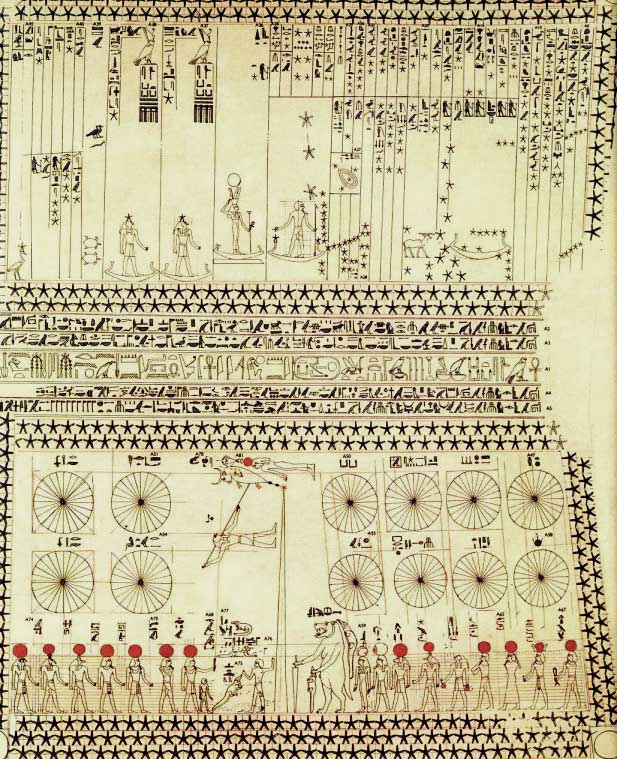
Senenmut was the architect of the prestigious Pharaoh Hatshepsut's tomb complex. His own tomb, however, is equally as impressive as it includes a galactic map on the ceiling which is the first-known depiction of its kind. The map comprises of two segments – the northern and southern hemispheres. The northern hemisphere shows the Egyptian lunar cycles and well-known constellations, while the southern segment records the stars and planets which are visible to the naked eye. Interestingly, Mars is missing.
Spanning 5,000 years, ancient Egyptian art shows a style and craftsmanship which remained relatively unchanged with little cultural influence outside the Nile valley. From depictions of ancient wars to the symbolic portrayal of old religions, ceremonies, and divinities, the antiquities of ancient Egypt have stood the test of time and many have survived into the present day, allowing us an insight into one of the oldest civilizations ever known.
-- Sent from my Linux system.
No comments:
Post a Comment